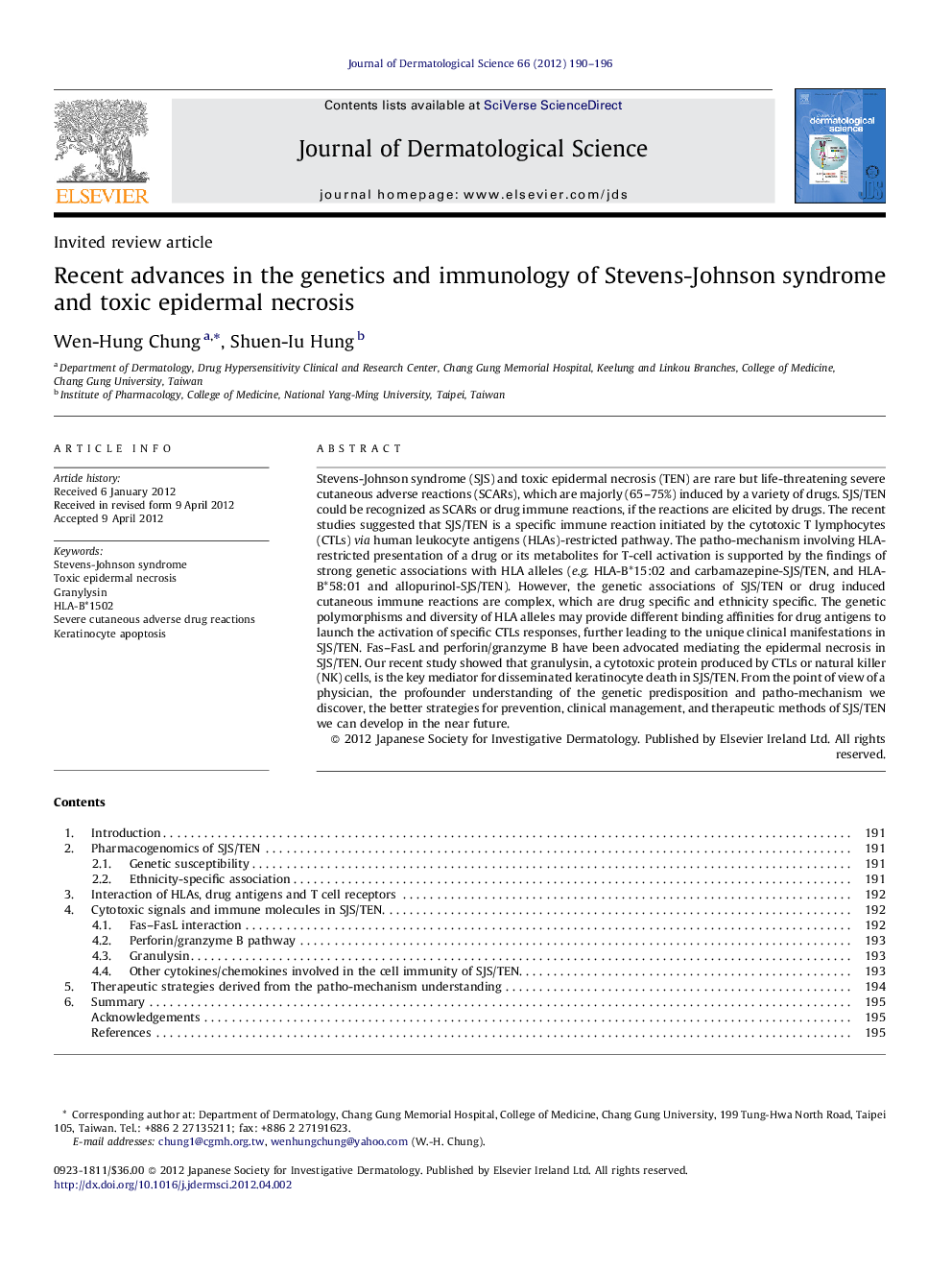| Article ID | Journal | Published Year | Pages | File Type |
|---|---|---|---|---|
| 3213105 | Journal of Dermatological Science | 2012 | 7 Pages |
Stevens-Johnson syndrome (SJS) and toxic epidermal necrosis (TEN) are rare but life-threatening severe cutaneous adverse reactions (SCARs), which are majorly (65–75%) induced by a variety of drugs. SJS/TEN could be recognized as SCARs or drug immune reactions, if the reactions are elicited by drugs. The recent studies suggested that SJS/TEN is a specific immune reaction initiated by the cytotoxic T lymphocytes (CTLs) via human leukocyte antigens (HLAs)-restricted pathway. The patho-mechanism involving HLA-restricted presentation of a drug or its metabolites for T-cell activation is supported by the findings of strong genetic associations with HLA alleles (e.g. HLA-B*15:02 and carbamazepine-SJS/TEN, and HLA-B*58:01 and allopurinol-SJS/TEN). However, the genetic associations of SJS/TEN or drug induced cutaneous immune reactions are complex, which are drug specific and ethnicity specific. The genetic polymorphisms and diversity of HLA alleles may provide different binding affinities for drug antigens to launch the activation of specific CTLs responses, further leading to the unique clinical manifestations in SJS/TEN. Fas–FasL and perforin/granzyme B have been advocated mediating the epidermal necrosis in SJS/TEN. Our recent study showed that granulysin, a cytotoxic protein produced by CTLs or natural killer (NK) cells, is the key mediator for disseminated keratinocyte death in SJS/TEN. From the point of view of a physician, the profounder understanding of the genetic predisposition and patho-mechanism we discover, the better strategies for prevention, clinical management, and therapeutic methods of SJS/TEN we can develop in the near future.
